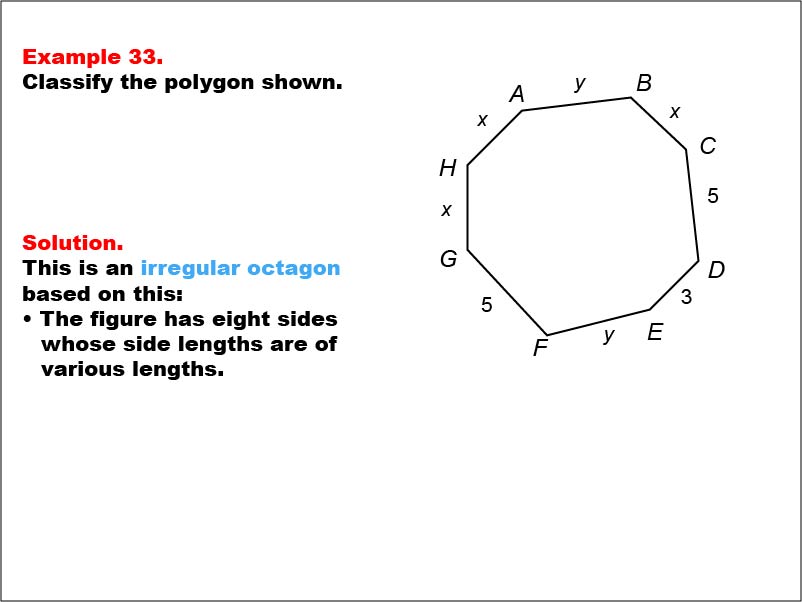
Display Title
Math Example--Polygons--Polygon Classification: Example 33
Display Title
Math Example--Polygons--Polygon Classification: Example 33

Topic
Polygons
Description
This example features an octagon with sides labeled as x, y, 5, and 3. The sides are of varying lengths, indicating it is irregular. It demonstrates how a combination of variables and specific numeric values can be used to show irregularity in polygons.
Polygon classification is a fundamental concept in geometry that helps students analyze and categorize shapes based on their properties. This collection of examples provides insights into how partial information about side lengths can be used to determine the irregularity of octagons.
Presenting multiple worked-out examples is crucial for students to fully grasp the nuances of polygon classification. Each example offers a unique perspective on how to identify irregular octagons, allowing students to build a comprehensive understanding through varied representations and partial information.
Teacher's Script: Take a look at this octagon, class. We see sides labeled with both variables and specific lengths. What does this tell us about the polygon? Even if we don't know all the side lengths, how can we use this partial information to classify the octagon as irregular? Let's discuss why having even a few different side lengths is sufficient to determine irregularity in an octagon.
For a complete collection of math examples related to Polygons click on this link: Math Examples: Polygon Classification Collection.
| Common Core Standards | CCSS.MATH.CONTENT.5.G.B.3, CCSS.MATH.CONTENT.7.G.B.6 |
|---|---|
| Grade Range | 6 - 8 |
| Curriculum Nodes |
Geometry • Polygons • Definition of a Polygon |
| Copyright Year | 2013 |
| Keywords | polygons, classification |